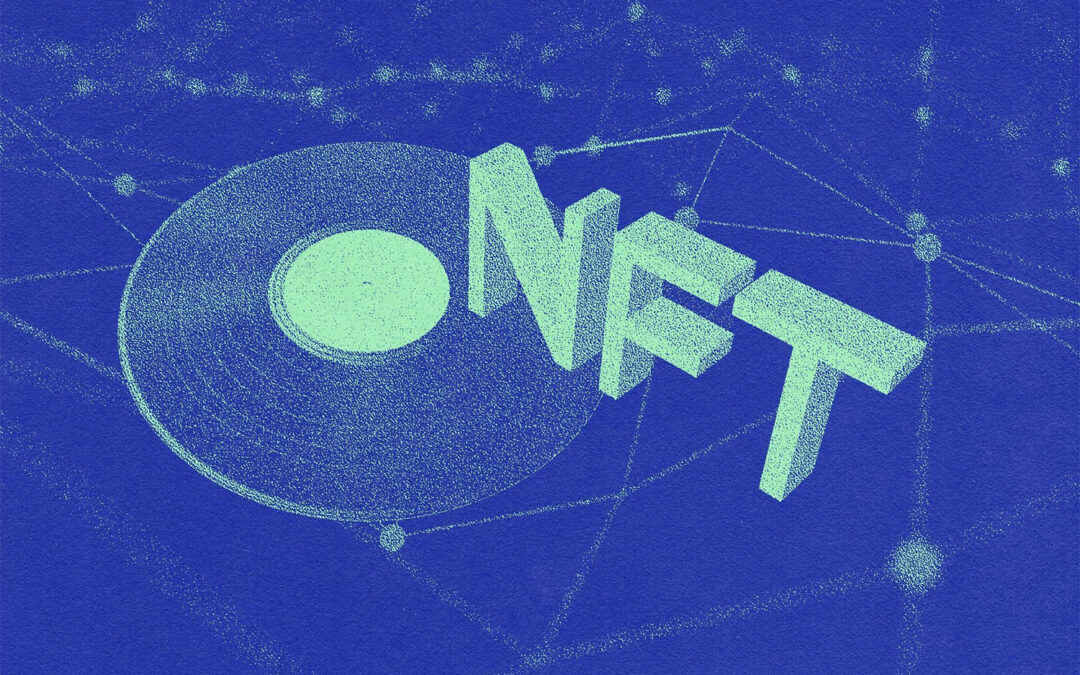It’s hard to look anywhere online without hearing some chatter about NFTs. There seems to be equal discourse given to NFTs being the next big thing in, well, everything, to NFTs being nothing but a scam ready to fall apart at the seams. Regardless of which side of the fence one falls, one thing is clear; NFTs are here, and they are having an impact.
But what are NFTs, exactly? How are they changing the digital art landscape? And how might they be used to disrupt the music industry?
Let’s take a look.
What Are NFTs?
NFT stands for Non-Fungible Token – a digital token that cannot be interchanged for another. It can be bought, sold, traded, modified, but it will always remain unique. Compare that to a 5-dollar bill, which can be replaced by any other 5-dollar bill – or five ones, or 25 quarters, etc. – and still hold the same function and value.
A “token” in the crypto sense is a piece of data stored on a blockchain. Every token is encrypted with a unique ID that cannot be changed, and is permanently registered into the blockchain. When the token moves, its unique ID moves with it. Since no two tokens can share the same ID, the tokens are non-fungible – truly irreplaceable.
Tokens move between digital “wallets” that hold crypto assets. Each wallet, like each token, is truly unique. A token can only exist once, in one wallet. Whoever owns the wallet holding the token, owns the token. It’s a powerful method of asserting ownership of an item.
How Do You Sell Art as NFTs?
To turn a work of art – an image, a music track, a video – into an NFT, it must be “minted”. Minting is the act of registering the artwork’s metadata on the blockchain – for digital art, this might be the URL of the image, or if the image is small enough, minting the data of the image itself.
The NFT can then be bought and sold on the blockchain as described above. Owning the NFT gives you ownership of the metadata stored within, certifying your ownership of the asset.
While commonly used as a means of selling purely digital artworks, it’s possible to mint an NFT for a physical object and use the NFT as the method of transaction. This can help prevent theft or fraud of physical objects by creating an indelible record of ownership on the blockchain.
How Can NFTs Disrupt the Music Industry?
It’s no secret that there’s a lot wrong with the current state of the music industry globally. Streaming has made it harder than ever to be a musical artist. While even the smallest indie band now has access to a global market, their ability to monetise that market is sorely restrained by pitiful royalties and inequitable pay distribution.
That’s where NFTs come in.
- Ownership of the work. It can be difficult to legally assert provenance and ownership of a digital work. Digital files are incredibly easy to copy and share freely; proving their origin can be a nightmare. NFTs resolve this issue – an artist mints their song on completion, creating an indelible record of their ownership. No matter where the song ends up, there is a record of who created it and when.
- Cutting out middlemen. NFTs give musicians a direct line to their audience without the need for current lop-sided streaming arrangements. With NFTs, musicians have complete control over the minting and distribution of the work. When people sell the NFTs later, the musicians automatically receive royalties on the transaction. This all empowers musicians to get more of the money from the sale of their music than with traditional methods.
- Simplified royalty sharing. Royalty disputes can get ugly. With NFTs, full or fractional ownership of recorded music can be minted and distributed. Artists could even sell part of the ownership of their songs to raise funds for additional albums to be created.
- Boost artists up the totem pole.The current value chain of the music industry places the label at the top and the artist somewhere on the bottom. NFTs could empower a shift in this value chain where the artists are at the top and labels and record companies come in below. This liberalisation of the music industry could create just the disruption necessary to make the industry more equitable for creators.
Conclusion
NFTs are highly speculative and in an early period of discovery and exploration. It’s very possible that the incredible high values we see placed on NFTs today could come crashing down as they become more mainstream tomorrow. But even if this were the case, the opportunities and value propositions held by the NFT technology itself is still invaluable to artists of any type. Clear, concise, immutable, easily verifiable ownership of work will empower artists of the future to control their works and their livelihoods more readily.
